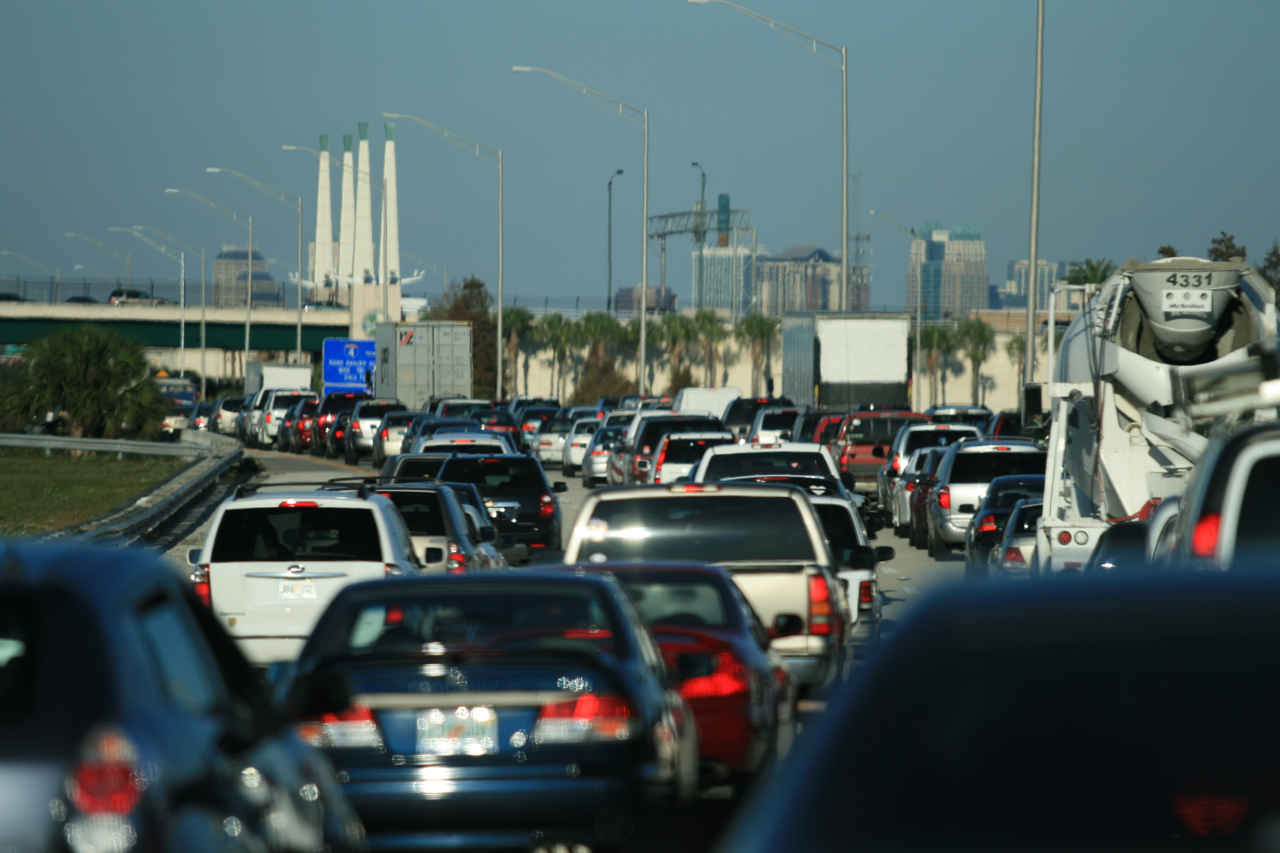Call it the rush hour paradox.
In a new study that confirms something that's blindingly clear to anyone who's ever gotten in a car, researchers have found that transportation planners who try to decrease travel times by making driving more convenient are basically ensuring that their communities will be choked by gridlock, and everyone will have a slower route to their destinations.
A coalition of academics from around the world modeled what would happen if all residents of a car-centric city made their transportation choices solely on the basis of how much time they would save by taking the fastest mode available to them — which, for most of them, would be a personal car. Paradoxically — but unsurprisingly — the model showed that when everyone tries to speed up their commute by hopping in the whip, they create traffic jams, slowing down average travel times about 25 percent compared to how fast they'd be if there were no other traffic on the road at all.
And thanks to the well-known law of induced demand, there's simply no way to cut that congestion by building more lanes along the most popular routes — affirming that the only way to get rid of excessive traffic is to incentivize drivers to start using other modes of transportation by making them as fast, safe, and affordable as possible.
Surprisingly, the lead researcher behind the study, mathematician Raphael Prieto Curiel, says the paper was inspired by a long queue at a transit kiosk rather than a long wait in a traffic jam. While at a conference at Medellín, Colombia, he and his co-authors marveled at the region's robust and speedy public transport network, but were less impressed by the 30-minute wait to pay their fares.
"We said, 'This isn't going to work, we need to do something different,'" Prieto Curiel said. "But then we said, 'Wait: but do we really want to push people to use cars instead?'"
An avowed sustainable commuter himself, Prieto Curiel says that transportation planners often under-estimate the tools at their disposal to speed up transit service — like adding a contactless payment option at that over-crowded kiosk, or adding a bus rapid transit lane — while over-estimating their tools to speed up driving commutes, which quickly becomes mathematically impossible in a contained city environment.
Making transit speedier and active modes safer doesn't mean cities have to ban cars from their streets altogether — though some think the study suggests they should. But it does suggest that cities should stop over-focusing on the rare occasions when driving really is necessary, and start thinking about how to get people where they need to go as quickly as possible on mass modes.
"When you talk about mobility and public transport, people's minds tend to go to very special cases very quickly," Prieto Curiel said. "Once I started talking about this article, people immediately said, 'But how is my grandma going to go the hospital when she has a broken leg?' Obviously, there are journeys that can’t be done by walking or on the Metro. But it’s not the outlier, special sort of journey that you need to think about — it’s the average one. It’s millions of people going to work and coming back, going to school and back, going to the grocery store and back."
For megacities with many millions of travelers to keep moving, it's even more critical that transportation leaders acknowledge the rush hour paradox — and the harsh reality that driving can only take them so far, even if all they care about is reducing commute times. In Prieto Curiel's native Mexico City, which has a slightly larger population than New York City, about 23 percent of daily trips are taken by personal cars, a number that he says is still too high. (In bike-friendly Portland, for contrast, it's 57 percent.)
Of course, that number is probably higher than it needs to be for reasons that have nothing to do with speed at all. Prieto Curiel acknowledges that the biggest shortcoming of his model is that it doesn't adjust for how safety, comfort, cost, and other factors impact mode choice; taken together, those obstacles can make getting people onto transit an all-too-literal uphill climb.
"On some of the lines in Mexico City, you have to go down 300 steps just to get to the platform, and then back up those steps at the end of the ride," he said. "And in some of the stations, the escalator broke two years ago and never got fixed. So for two years, you see these poor people climbing and climbing, and once they reach the top, they have zero oxygen, and they never want to ride the Metro again. ... We need to look at how to make every journey on the public transport not just fast, but also comfortable, easy, and secure, which is an especially big problem for women in my city. [Note: the women of Mexico City face some of the world's highest rates of sexual harassment and violence on transit.] That has to be on the top of the agenda for public transport."
Despite all the work to be done, the paradox at the heart of the paper is still a critical one for planners to remember — especially if their number one goal is decreasing congestion.
"If there's a lot of traffic, we can do so many things to fight that," said Prieto Curiel. "We can reduce the number of lanes for cars and give more space to bikes, or pedestrians, or public transport. We can ave fewer parking spaces, fewer shared lanes, and gradually increase the incremental costs of driving in all these ways. We just need to stop designing cities for cars."






